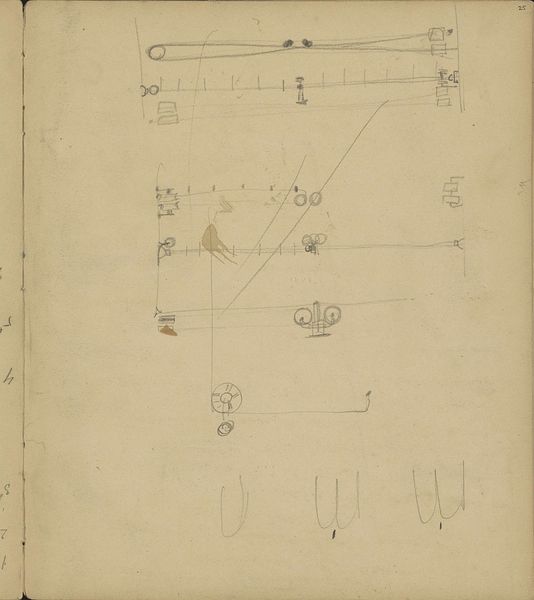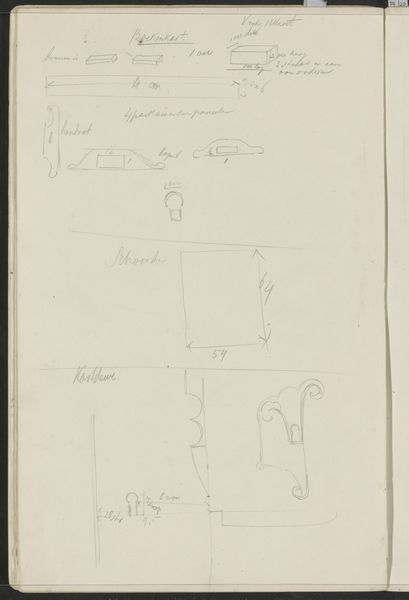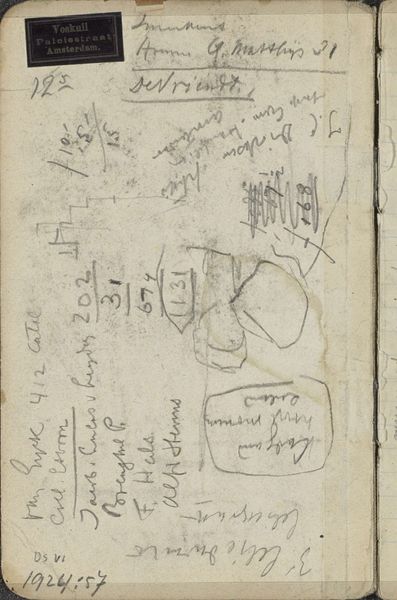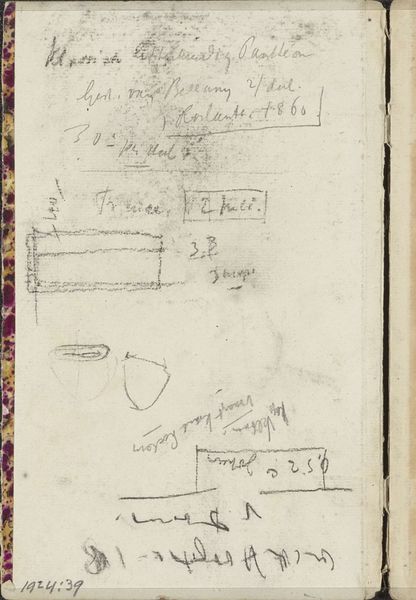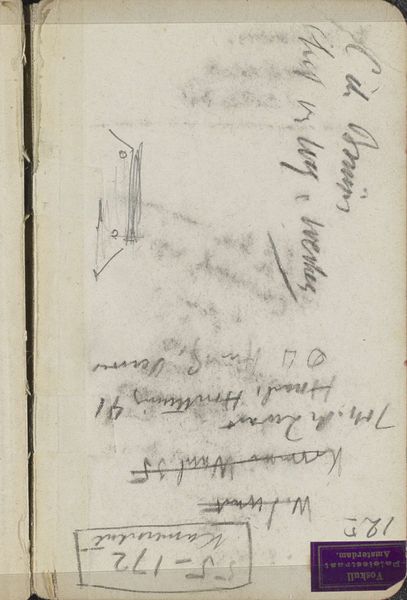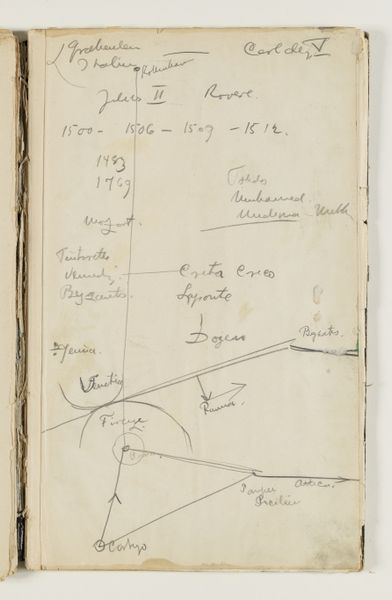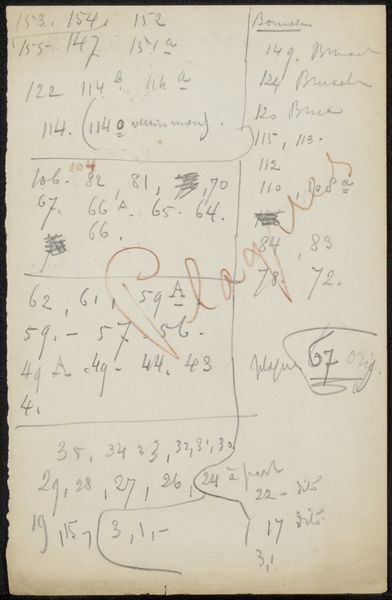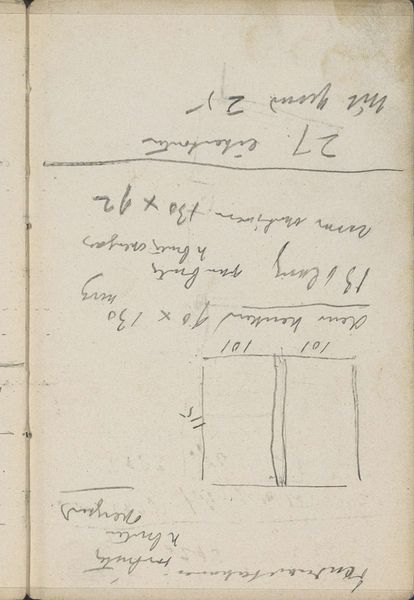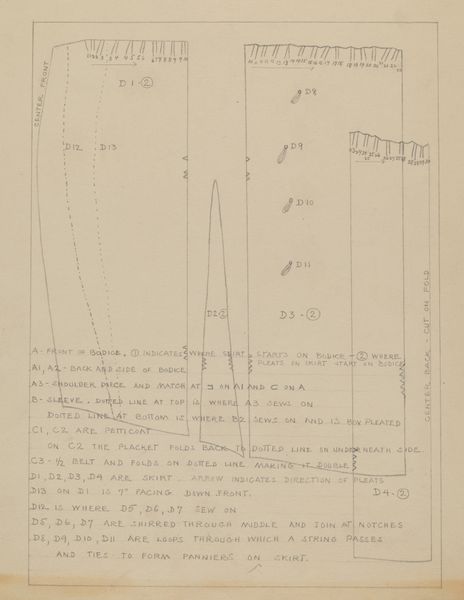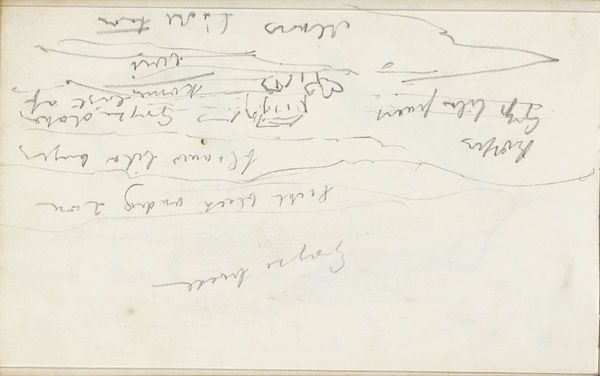![Notizen und kleine Skizzen (Sketches and Notes) [p. 36] by Max Beckmann](/_next/image?url=https%3A%2F%2Fd2w8kbdekdi1gv.cloudfront.net%2FeyJidWNrZXQiOiAiYXJ0ZXJhLWltYWdlcy1idWNrZXQiLCAia2V5IjogImFydHdvcmtzLzJjZGM0NjA3LWFiNTAtNDA5MS04YzhlLTczNGQzMTUxZTZiOC8yY2RjNDYwNy1hYjUwLTQwOTEtOGM4ZS03MzRkMzE1MWU2YjhfZnVsbC5qcGciLCAiZWRpdHMiOiB7InJlc2l6ZSI6IHsid2lkdGgiOiAxOTIwLCAiaGVpZ2h0IjogMTkyMCwgImZpdCI6ICJpbnNpZGUifX19&w=1920&q=75)
drawing, paper, pencil
drawing
paper
pencil
expressionism
Copyright: National Gallery of Art: CC0 1.0
Editor: Here we have a page from Max Beckmann's "Notizen und kleine Skizzen," or "Sketches and Notes," done in pencil on paper. It looks like a page torn from a sketchbook. The composition is chaotic, filled with numbers and indecipherable shapes. It feels very immediate, like a glimpse into the artist’s mind. What stands out to you most? Curator: I’m drawn to the numerical aspects, presented almost as equations. Paired with the seemingly random images and notes, these figures offer us a way to consider Beckmann’s historical and political context. As an expressionist, Beckmann often reflected the anxiety and disillusionment of post-World War I Germany in his work. Editor: So, you're suggesting the numbers are not arbitrary? Curator: Not at all. Consider the Weimar Republic, hyperinflation, and the economic turmoil artists were navigating. Could these be accounts? Costs of materials? In the wake of war, expressionists sought new languages, and to some extent, their work becomes about processing societal trauma and individual experiences against this backdrop. Does that interpretation resonate with you at all? Editor: It hadn't occurred to me to read them financially but in this new light, they speak to both an experience of the era and become artistic material. It makes the personal economic struggles so very evident in the work itself. Curator: Exactly! It goes beyond just aesthetics; it links directly to socio-political conditions. And this is something expressionism helped bring to the forefront as a mode of artistic production in that era. Editor: I’ll definitely remember to consider the economic conditions as a component when considering Expressionist work!
Comments
No comments
Be the first to comment and join the conversation on the ultimate creative platform.

